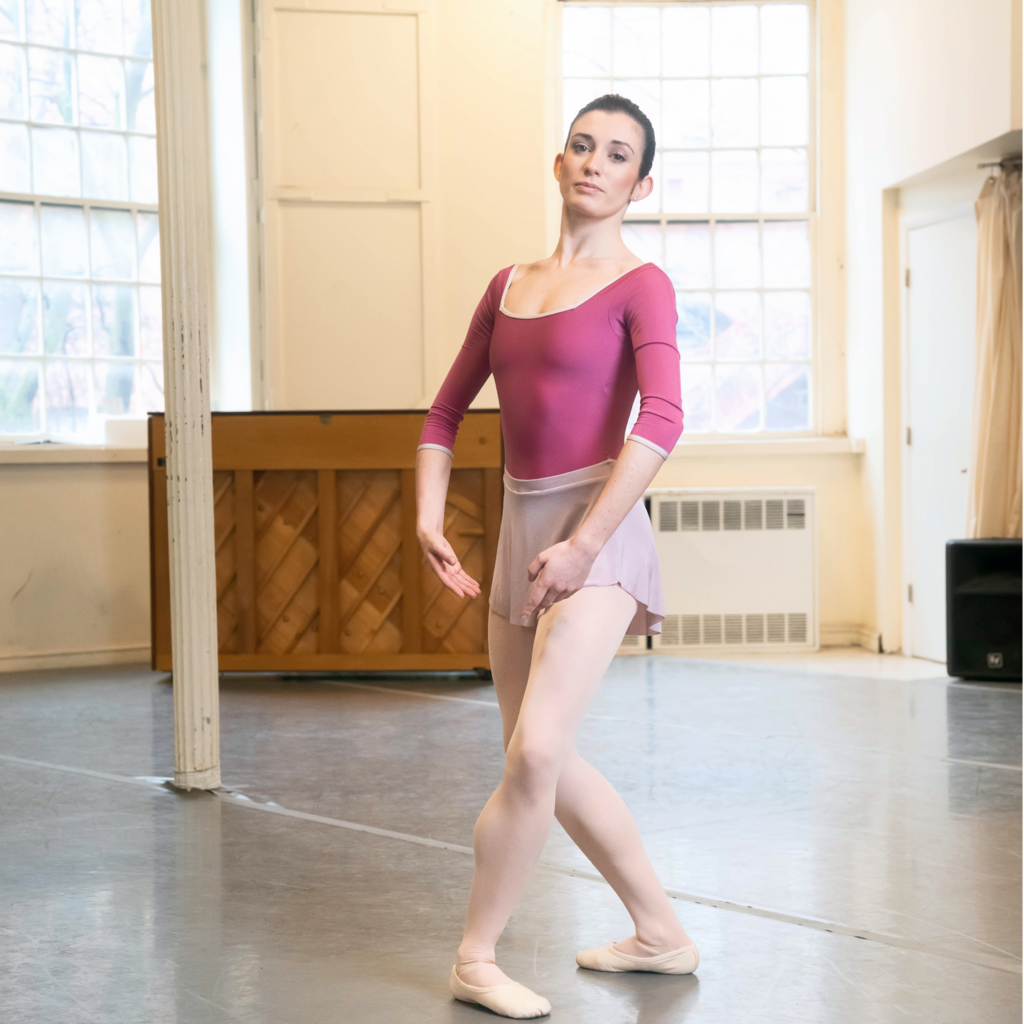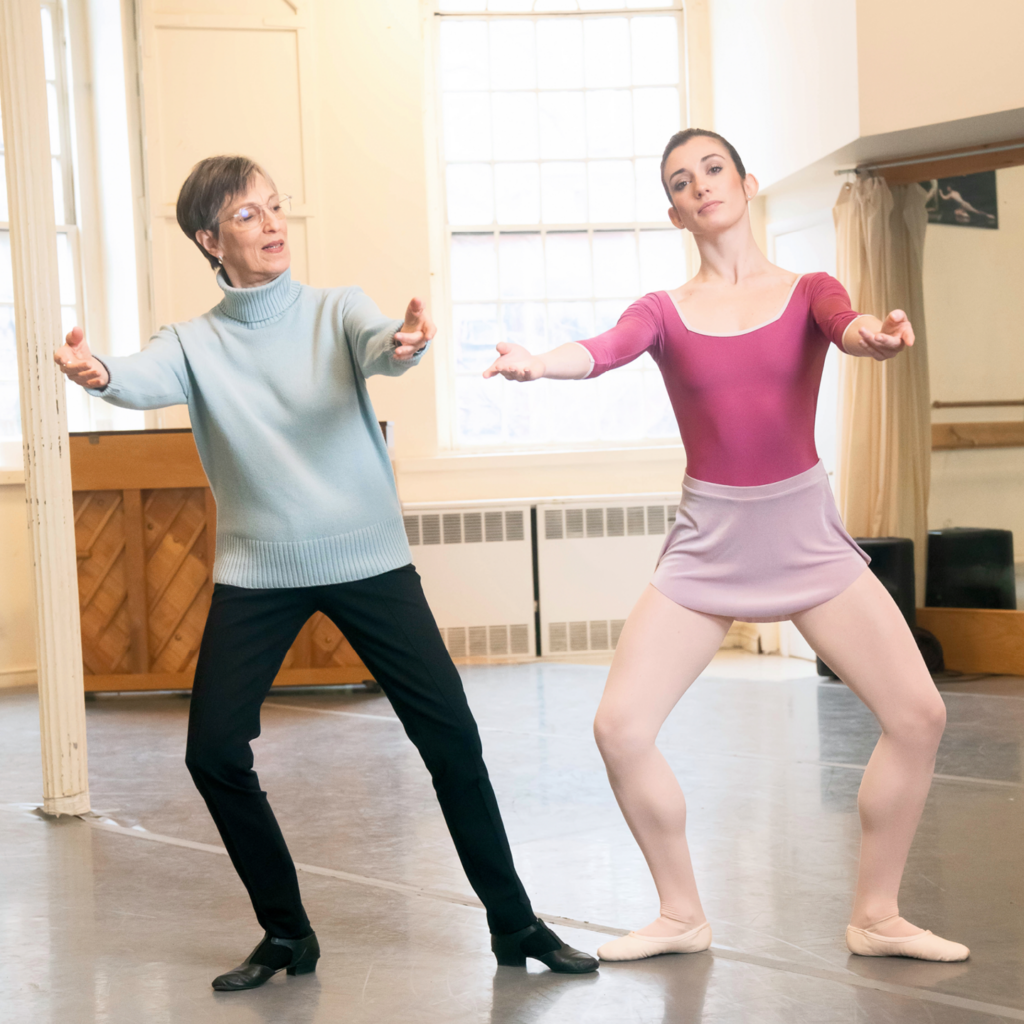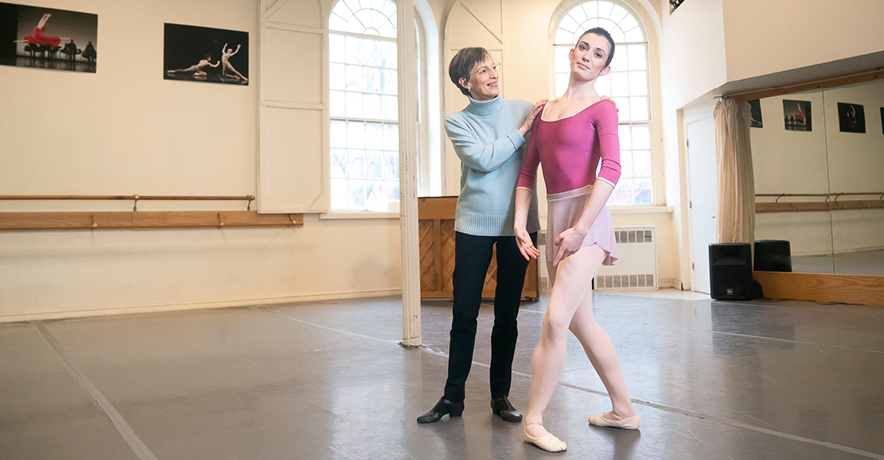Breaking Down the Cecchetti Method’s Full Contretemps
For Diana Byer, founder and artistic director emerita of New York Theatre Ballet and director of the NYTB School, the defining characteristic of Cecchetti training is unification. “The music, the technique, the style: It’s all one,” she says. “To me, that’s what dancing is.”
Byer describes the Cecchetti method as a pure discipline, which gives her students the foundation for any dance style they may encounter. “The movement speaks for itself, without affectation; just be a person who happens to dance.”
According to Byer, “There’s a wealth of vocabulary that’s being forgotten.” Though Cecchetti full contretemps is taught often at the NYTB School, the step is not widely known. “We do it all the time in class, but when I hold auditions, nobody’s ever heard of it.”
Full contretemps is a compound step, combining a few elements to create one movement, that exemplifies much of what Byer loves about the Cecchetti style: delicate details, precise rhythm and generous gesture.
Footwork and Basic Coordination
- From fifth position with the right foot front, the step begins with something like a petit jeté—“I always call it a jeté,” says Byer, “but it’s not like a regular jeté where you dégagé and then jump. This has a little rond-de-jambe feeling to it. Circle the left foot very close to the right, and then you leave the floor, but the bottom foot is not fully stretched.” She describes this as a “lilt,” rather than a jump. Similarly, the right foot is not in cou-de-pied back upon landing, but rather stays relaxed, ready to move quickly into what’s next.
- From here, chassé to the right into second position and close the left foot into fifth back.
- Then, execute a temps levé in which the bottom foot is fully stretched, bringing the left foot through a passé at mid-calf height to the front, and into a chassé forward. This second half of the step can be executed alone, and is called demi-contretemps.

Add the Épaulement
“Épaulement is not a turn of the head,” Byer clarifies. “ ‘Les épaules’ is the shoulders.” In Cecchetti, épaulement originates underneath the shoulder blade, and the head responds freely. “You’re not making pictures of different shapes,” Byer adds. “It’s a feeling of movement.”
While full contretemps is executed flat to wall five (en face to the audience or the mirror), the engagement of the upper back “creates shade,” so that it doesn’t appear flat at all. With the first small “jeté” and chassé through second position into fifth, the head slightly tilts—Byer calls it a “pure head bend”—to the foot that is coming to the front (right, in this instance). The demi-contretemps uses “real épaulement,” bringing the other (left) side of the back slightly forward from under the shoulder blade, and allowing the head to turn slightly over that shoulder in reaction.
Port de Bras
With the first half of the compound step, the arms pass through fifth devant (frequently known as first, in other syllabuses) to a small second position, not quite all the way open, and then return quickly to fifth en bas. The hands turn over slightly as they open, to create the “generosity” of the gesture, and the dancer’s gaze should simultaneously shift out, “past the maestro, to the balcony,” Byer says. In the demi-contretemps, the arms remain in fifth en bas.
Tip: The hands should not be tense as they turn over, says Byer. She quotes her teacher Margaret Craske, to whom Cecchetti himself entrusted his training method, as saying to feel as if there are pennies on the fingers, giving them a bit of weight in this gesture.

Musicality
“The rhythm is where everybody gets stumped,” says Byer. “It is: and-a-one—that’s the plié in fifth after the chassé second—and-two.” The step can look “mushy” without that accent on the “one.” The trick is executing the entire port de bras on “and-a-one” without the fluid movement becoming staccato.
Keep It Subtle
“It’s a grounded step,” Byer emphasizes, “the feeling is heavy.” Bouncing out of plié and executing a tombé instead of the first chassé is a common mistake. “It should be down into the floor in the chassé, and then up out of the floor on the temps levé.” Similarly, take care that the chassé forward in the demi-contretemps doesn’t turn into a failli.
Another frequent fault is exaggeration, especially of the épaulement. “You have that lovely change of the upper body,” says Byer, “but rather than a complete turn, it just catches the light.”






